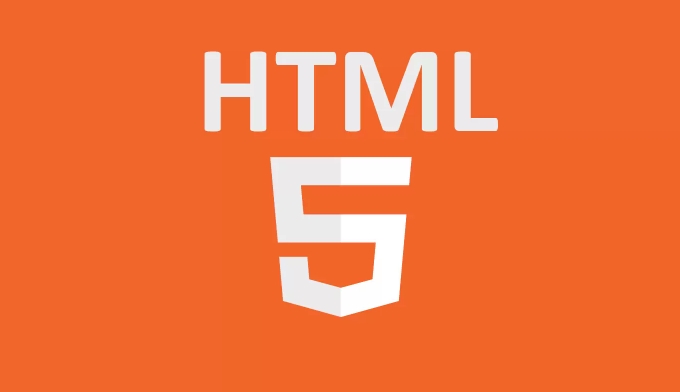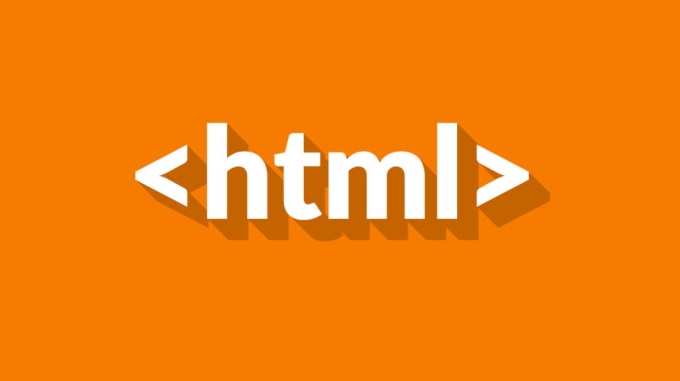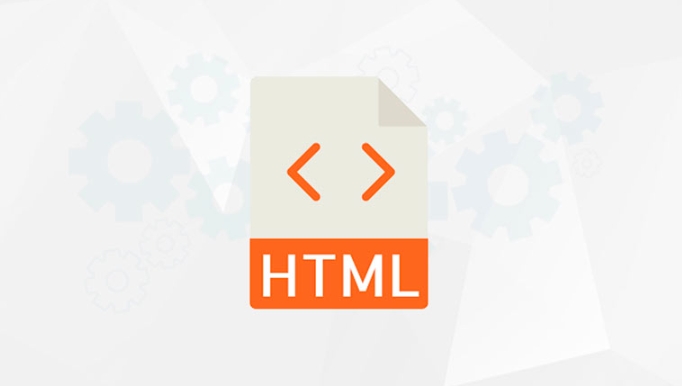How to disable form validation with the novalidate attribute?
Jul 15, 2025 am 01:07 AMTo submit a form without triggering the browser's default verification mechanism, use the HTML's novalidate property. The specific method is to directly add novalidate or novalidate="novalidate" to the
<form> tag, which will disable all automatic verification of required, pattern and other attribute fields. Applicable scenarios include: 1. When using front-end custom verification logic; 2. Skip verification in the debugging phase to quickly test the process; 3. Avoid interfering between submissions when processing multi-step forms. Note that novalidate is different from formnovalidate, which is only used for a specific submission button and only affects a single submission. In addition, once novalidate is used, to preserve some verification logic, it must be implemented manually through JS. Older browsers may not support them completely, so it is recommended to test them thoroughly before going online.
When you want the user to submit a form without triggering the browser's default verification mechanism, you can use the HTML's novalidate property to turn off form verification. This property can be added directly to the <form></form> tag, which is simple and effective.

How to use the novalidate property correctly
novalidate is a Boolean property that the browser will not automatically verify the form as long as it appears in the <form></form> tag. You can write this way:
<form novalidate> <!-- Form Field--> </form>
It can also be written in the form with an equal sign, with the same effect:

<form novalidate="novalidate"> <!-- Form Field--> </form>
It should be noted that after adding this property, all input boxes with required , pattern and other verification properties will no longer be forced to be checked by the browser.
In which cases are suitable for use of novalidate
- Front-end custom verification logic : If you have written your own verification logic in JavaScript, you don’t need the browser to do an additional verification.
- Skip verification in the debugging stage : I want to quickly test the form submission process during the development process, but I don’t want to fill in the required items repeatedly.
- Multi-step form : For example, fill in information in steps, the intermediate steps do not require verification of all content immediately.
At this time, using novalidate can avoid interference and make the user experience smoother.

The difference between formnovalidate
There is also a similar property called formnovalidate , but it is not added to <form> , but to submit buttons (such as <button> or <input type="submit"> ). Its purpose is to "skip verification only in this submission".
For example:
<form> <input type="email" required /> <button type="submit" formnovalidate>Skip verification submission</button> </form>
In this way, even if the email format is incorrect, click this button to submit it directly. If there are other submit buttons without formnovalidate added, those buttons will still trigger verification.
Notes and FAQs
- Don't confuse
novalidateandformnovalidate. One is to control the entire form and the other is to control a certain submission action. - If you use
novalidatebut want some fields to still have verification logic, then this part of the verification must be implemented in JS. - Some older mobile browsers may not support them completely, so it is best to test them before going online.
In general, novalidate is a lightweight switch suitable for use when there is no need for browser default verification.
Basically that's it.
The above is the detailed content of How to disable form validation with the novalidate attribute?. For more information, please follow other related articles on the PHP Chinese website!

Hot AI Tools

Undress AI Tool
Undress images for free

Undresser.AI Undress
AI-powered app for creating realistic nude photos

AI Clothes Remover
Online AI tool for removing clothes from photos.

Clothoff.io
AI clothes remover

Video Face Swap
Swap faces in any video effortlessly with our completely free AI face swap tool!

Hot Article

Hot Tools

Notepad++7.3.1
Easy-to-use and free code editor

SublimeText3 Chinese version
Chinese version, very easy to use

Zend Studio 13.0.1
Powerful PHP integrated development environment

Dreamweaver CS6
Visual web development tools

SublimeText3 Mac version
God-level code editing software (SublimeText3)

Hot Topics
 How do I stay up-to-date with the latest HTML standards and best practices?
Jun 20, 2025 am 08:33 AM
How do I stay up-to-date with the latest HTML standards and best practices?
Jun 20, 2025 am 08:33 AM
The key to keep up with HTML standards and best practices is to do it intentionally rather than follow it blindly. First, follow the summary or update logs of official sources such as WHATWG and W3C, understand new tags (such as) and attributes, and use them as references to solve difficult problems; second, subscribe to trusted web development newsletters and blogs, spend 10-15 minutes a week to browse updates, focus on actual use cases rather than just collecting articles; second, use developer tools and linters such as HTMLHint to optimize the code structure through instant feedback; finally, interact with the developer community, share experiences and learn other people's practical skills, so as to continuously improve HTML skills.
 How do I use the element to represent the main content of a document?
Jun 19, 2025 pm 11:09 PM
How do I use the element to represent the main content of a document?
Jun 19, 2025 pm 11:09 PM
The reason for using tags is to improve the semantic structure and accessibility of web pages, make it easier for screen readers and search engines to understand page content, and allow users to quickly jump to core content. Here are the key points: 1. Each page should contain only one element; 2. It should not include content that is repeated across pages (such as sidebars or footers); 3. It can be used in conjunction with ARIA properties to enhance accessibility. Usually located after and before, it is used to wrap unique page content, such as articles, forms or product details, and should be avoided in, or in; to improve accessibility, aria-labeledby or aria-label can be used to clearly identify parts.
 How do I create a basic HTML document?
Jun 19, 2025 pm 11:01 PM
How do I create a basic HTML document?
Jun 19, 2025 pm 11:01 PM
To create a basic HTML document, you first need to understand its basic structure and write code in a standard format. 1. Use the declaration document type at the beginning; 2. Use the tag to wrap the entire content; 3. Include and two main parts in it, which are used to store metadata such as titles, style sheet links, etc., and include user-visible content such as titles, paragraphs, pictures and links; 4. Save the file in .html format and open the viewing effect in the browser; 5. Then you can gradually add more elements to enrich the page content. Follow these steps to quickly build a basic web page.
 How do I create checkboxes in HTML using the element?
Jun 19, 2025 pm 11:41 PM
How do I create checkboxes in HTML using the element?
Jun 19, 2025 pm 11:41 PM
To create an HTML checkbox, use the type attribute to set the element of the checkbox. 1. The basic structure includes id, name and label tags to ensure that clicking text can switch options; 2. Multiple related check boxes should use the same name but different values, and wrap them with fieldset to improve accessibility; 3. Hide native controls when customizing styles and use CSS to design alternative elements while maintaining the complete functions; 4. Ensure availability, pair labels, support keyboard navigation, and avoid relying on only visual prompts. The above steps can help developers correctly implement checkbox components that have both functional and aesthetics.
 How do I minimize the size of HTML files?
Jun 24, 2025 am 12:53 AM
How do I minimize the size of HTML files?
Jun 24, 2025 am 12:53 AM
To reduce the size of HTML files, you need to clean up redundant code, compress content, and optimize structure. 1. Delete unused tags, comments and extra blanks to reduce volume; 2. Move inline CSS and JavaScript to external files and merge multiple scripts or style blocks; 3. Simplify label syntax without affecting parsing, such as omitting optional closed tags or using short attributes; 4. After cleaning, enable server-side compression technologies such as Gzip or Brotli to further reduce the transmission volume. These steps can significantly improve page loading performance without sacrificing functionality.
 How has HTML evolved over time, and what are the key milestones in its history?
Jun 24, 2025 am 12:54 AM
How has HTML evolved over time, and what are the key milestones in its history?
Jun 24, 2025 am 12:54 AM
HTMLhasevolvedsignificantlysinceitscreationtomeetthegrowingdemandsofwebdevelopersandusers.Initiallyasimplemarkuplanguageforsharingdocuments,ithasundergonemajorupdates,includingHTML2.0,whichintroducedforms;HTML3.x,whichaddedvisualenhancementsandlayout
 How do I use the element to represent the footer of a document or section?
Jun 25, 2025 am 12:57 AM
How do I use the element to represent the footer of a document or section?
Jun 25, 2025 am 12:57 AM
It is a semantic tag used in HTML5 to define the bottom of the page or content block, usually including copyright information, contact information or navigation links; it can be placed at the bottom of the page or nested in, etc. tags as the end of the block; when using it, you should pay attention to avoid repeated abuse and irrelevant content.
 How do I embed video in HTML using the element?
Jun 20, 2025 am 10:09 AM
How do I embed video in HTML using the element?
Jun 20, 2025 am 10:09 AM
To embed videos in HTML, use tags and specify the video source and attributes. 1. Use src attributes or elements to define the video path and format; 2. Add basic attributes such as controls, width, height; 3. To be compatible with different browsers, you can list MP4, WebM, Ogg and other formats; 4. Use controls, autoplay, muted, loop, preload and other attributes to control the playback behavior; 5. Use CSS to realize responsive layout to ensure that it is adapted to different screens. Correct combination of structure and attributes can ensure good display and functional support of the video.






